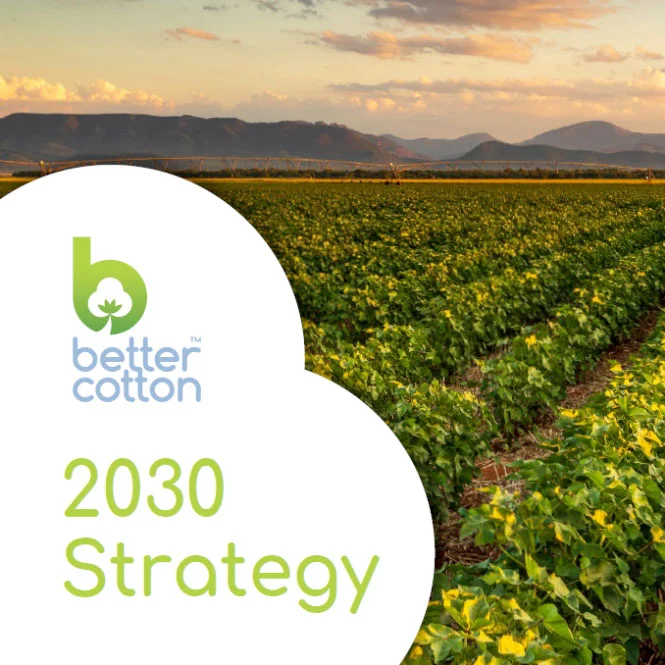- Who we are
- What we do
In just over 10 years we have become the world’s largest cotton sustainability programme. Our mission: to help cotton communities survive and thrive, while protecting and restoring the environment.
- Where we grow
Better Cotton is grown in 22 countries around the world and accounts for 22% of global cotton production. In the 2022-23 cotton season, 2.13 million licensed Better Cotton Farmers grew 5.47 million tonnes of Better Cotton.
- Our impact
- Membership
Today Better Cotton has more than 2,700 members, reflecting the breadth and diversity of the industry. Members of a global community that understands the mutual benefits of sustainable cotton farming. The moment you join, you become part of this too.
- Associate Membership
- Civil Society Membership
- Producer Organisation Membership
- Retailer and Brand Membership
- Supplier and Manufacturer Membership
- Find Members
- Member Monitoring
- Better Cotton Platform
- myBetterCotton
- Resources – Better Cotton Conference 2022
- Complaints
- Whistleblowing
- Safeguarding
- Get Involved in the Better Cotton Programme
- Thank you for contacting us
- Better Cotton’s Data Privacy Policy
- Log in
- Members’ Area
- Request for Proposals
- Better Cotton Cookie Policy
- Web Reference
- Measuring Cotton Consumption
- How to Implement the Chain of Custody Standard
- Resources – Better Cotton Conference 2023
- Certification Bodies Old
- Latest
- Sourcing
- Latest
The founding premise of Better Cotton is that a healthy sustainable future for cotton and the people that farm it is in the interests of everyone connected with it.
Let us help you find what you’re looking for
Results for {phrase} ({results_count} of {results_count_total})Displaying {results_count} results of {results_count_total}
Alliance for Water Stewardship (AWS) is Member and Partner of BCI. We caught up with CEO, Adrian Sym, to find out more about the organisation’s aims, commitments to Better Cotton, and how they communicate their work to the rest of the world.
Can you tell us about Alliance for Water Stewardship’s BCI Membership and the reciprocal relationship the two standards have?
Alliance for Water Stewardship (AWS) has had reciprocal membership with BCI for a number of years (BCI is also a member of AWS). It’s clear that we should be working very closely together; we are both standard systems and networks. We are both members of the ISEAL Alliance, and we share members. We also share some innovative approaches to standard system development. Adding to that, cotton is such a critical crop and water use is a critical factor in cotton production. It really makes sense for AWS to be a member of BCI and for both standards to work closely.
AWS is a global membership-based organisation which brings other organisations together to address a common goal. Can you share some thoughts on collaboration and cross sector partnerships?
To begin with, we define water stewardship in terms of what it should achieve. That means social, environmental and economic benefits and how those are achieved. You can’t address water on a farm-by-farm or household-by-household basis – it is a resource that is inherently shared. Our definition of water stewardship describes the importance of site and catchment-based action, emphasising the need to work in collaboration in areas where we are sharing this vital resource. Collaboration is therefore hardwired into water stewardship – it is part of our DNA. From day one of our efforts to develop and roll out the standard, the explicit objective to collaborate and support existing initiatives has been very clear. We are not trying to replace other standards or initiatives, we are here to support them to do more on water, where water is a critical factor. It’s for that reason that I’m really pleased we’ve been able to input into the revision of the Principles and Criteria component of the Better Cotton Standard System. We are now working alongside BCI and Helvetas to help roll out the new water stewardship approach in India, Pakistan, China, Tajikistan and Mozambique.
What would you say are the most important way you communicate with your members and stakeholders about using water in an environmentally sustainable way?
To a large extent, communication really goes to the heart of standard systems. At AWS, we are trying to establish a community that shares its knowledge on water stewardship, where community members can discuss issues and challenges, and share experiences, ideas and lessons in a safe environment. We want the dynamic of our community to be fluid. We don’t operate a linear “proposal and response’ way of exchanging information, but rather, our members have ownership of the learning agenda as well – they don’t have to rely on the few people who work for AWS. Our members are actively engaged in sharing their knowledge and ideas, and I think that leads to some interesting communication. I’m less interested in success stories. We all know this is hard, and sustainable water use is not something we are going to achieve and then pack up and go home – it’s something we are always going to need to work on. We’re interested in taking learnings and using them to create easier processes in the future. We want to understand the “how’ and then scale this up.
Listen to the full interview in the accompanying podcast, originally shared in the BCI 2017 Annual Report.


